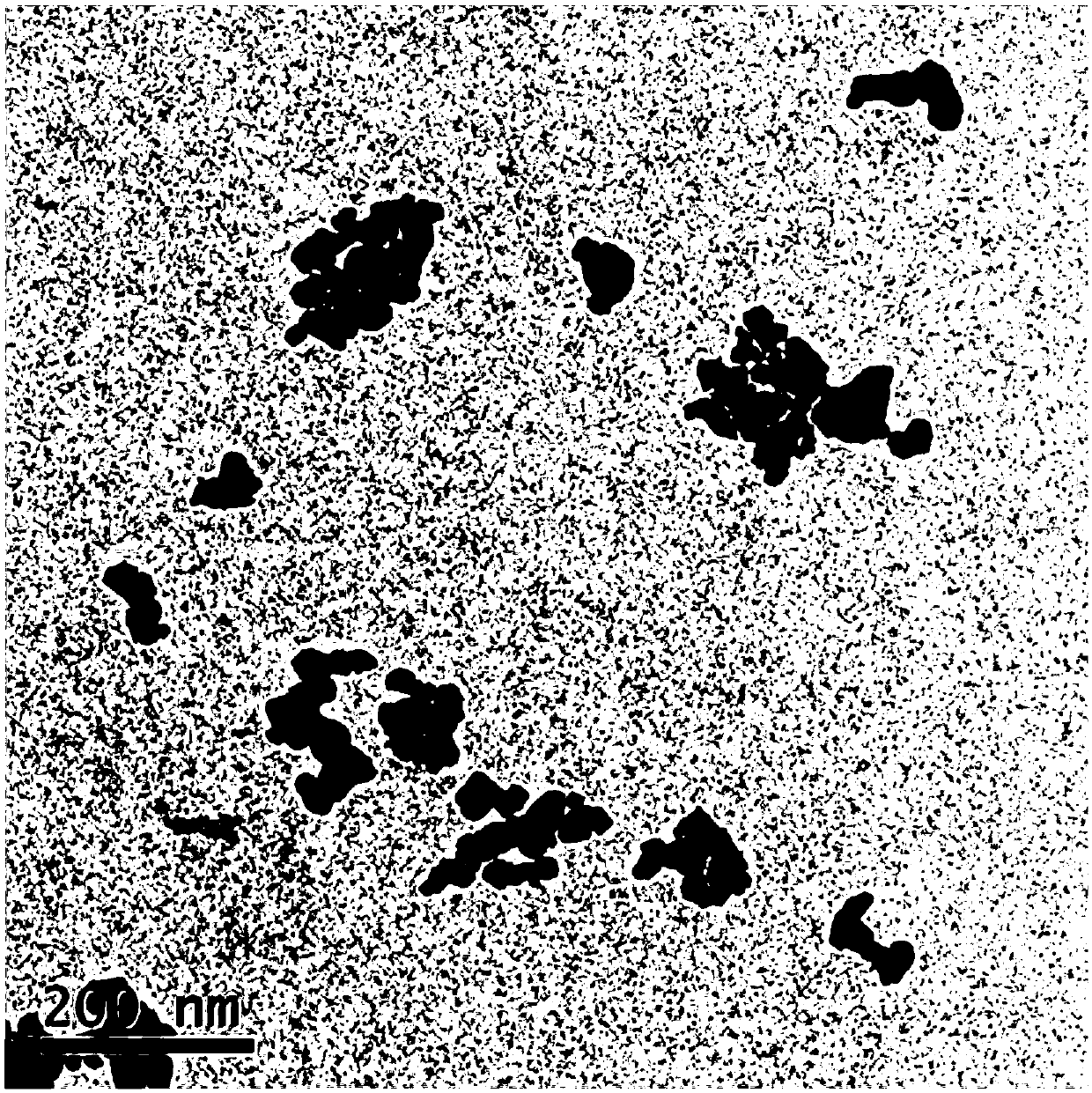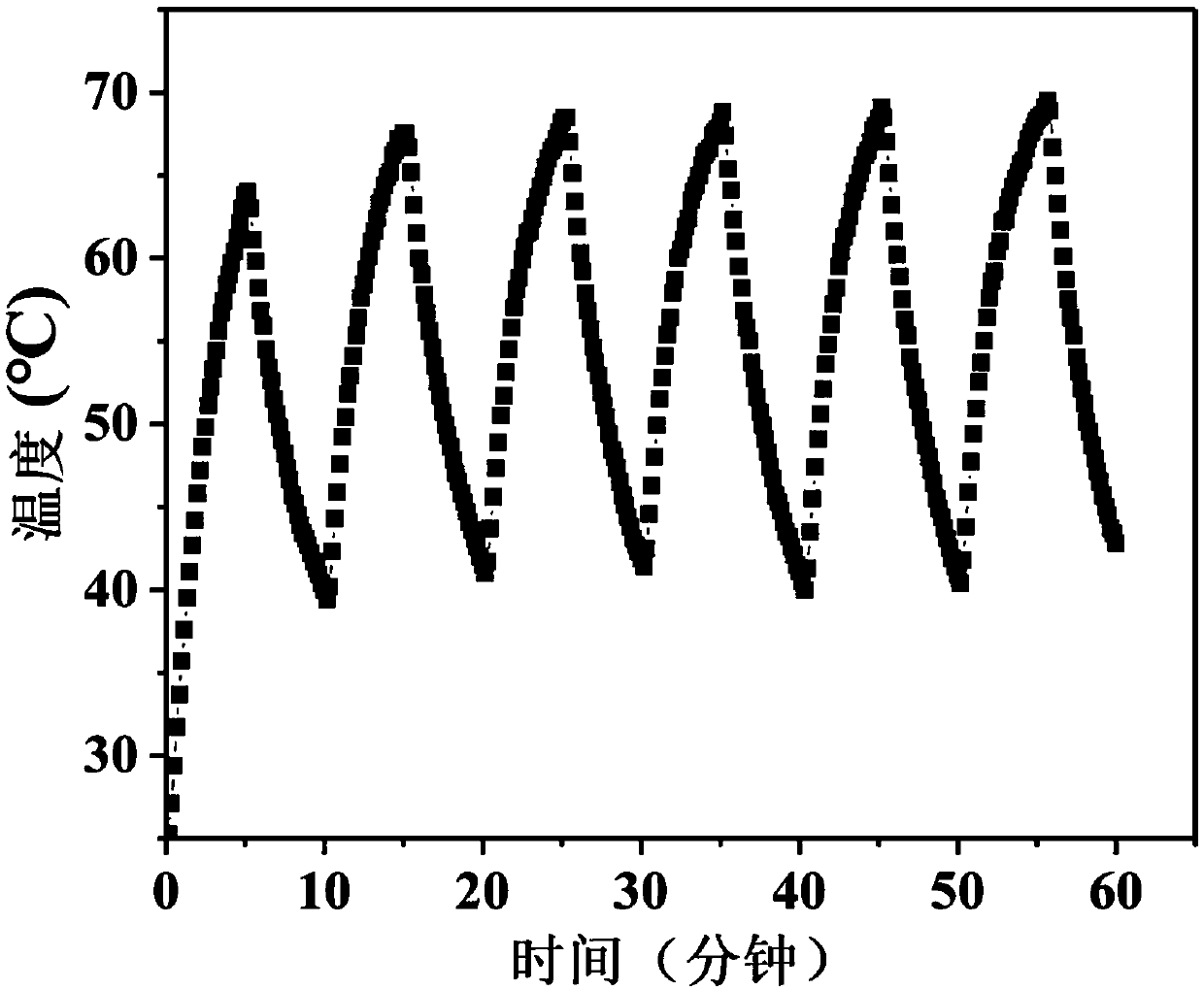Nano composite, preparation method and application thereof
A technology of nanocomposites and complexes, applied in materials, biomaterials, and biological fields, can solve problems such as difficulty in accurate diagnosis, achieve high contrast, excellent photothermal effect, and improve T1 relaxation rate.
- Summary
- Abstract
- Description
- Claims
- Application Information
AI Technical Summary
Problems solved by technology
Method used
Image
Examples
Embodiment 1
[0107] Example 1 Preparation of nanocomposite
[0108] 1 # Nanocomposite preparation
[0109] 1) According to the mass ratio of 1:5, weigh the black titanium dioxide and aminopolyethylene glycol carboxyl groups in sequence, and disperse them in an equal volume of deionized water to form a transparent solution. The concentration of black titanium dioxide is 2 grams per liter. Take 5 milliliters of each to mix, stir at 500 rpm for 24 hours at room temperature, and centrifuge to collect the precipitate.
[0110] 2) Dissolve the precipitate obtained in step 1) and gadoterate megluminate (DOTA-NHS) at a mass ratio of 50:1 in 10 ml of deionized water, mix well with ultrasound and stir for 48 hours, centrifuge to take the precipitate and vacuum dry .
[0111] 3) Take the dried precipitate obtained in step 2) and dissolve the CD133 antibody in 5 ml deionized water at a mass ratio of 400:1, mix well with ultrasound, stir for 24 hours, centrifuge to remove the supernatant to obtain a nanocomp...
Embodiment 2
[0153] Example 2 Structural Characterization of Nanocomposites
[0154] The structure of each nanocomposite prepared in the examples was characterized.
[0155] Take 1 # Nanocomposite samples are typical, figure 2 The 1 prepared in Example 1 is given # TEM image of the nanocomposite sample. It can be seen from the figure that the particle size of the nanocomposite is about 80nm. Figure 4 Is 1 # Physical image of the nanocomposite sample.
[0156] TEM photos and particle size of other nanocomposite samples and 1 # The samples are similar.
Embodiment 3
[0157] Example 3 Photothermal heating performance of nanocomposite
[0158] Take 1 # The nanocomposite sample is a typical sample, and the photothermal heating experiment is carried out.
[0159] Place 100 mg per liter of the compound described in Example 1 under a 808 nm laser, and observe its temperature with an infrared camera. Irradiate for 5 minutes each time, cool for 5 minutes, and repeat six times to observe the temperature rise and fall. The result is image 3 Shown. by image 3 It can be seen that the material can be stabilized at about 70°C after repeated heating for many times, and there is no obvious photothermal instability after five repeated heating, and it has the ability of repeated heating for many times, and it has good repeated heating for light and heat. effect. It can be seen that the nanocomposite still has good stability after repeated light and thermal heating.
[0160] The same photothermal heating experiment was performed on other nanocomposite samples...
PUM
| Property | Measurement | Unit |
|---|---|---|
| particle diameter | aaaaa | aaaaa |
| particle diameter | aaaaa | aaaaa |
| particle diameter | aaaaa | aaaaa |
Abstract
Description
Claims
Application Information
 Login to View More
Login to View More - R&D
- Intellectual Property
- Life Sciences
- Materials
- Tech Scout
- Unparalleled Data Quality
- Higher Quality Content
- 60% Fewer Hallucinations
Browse by: Latest US Patents, China's latest patents, Technical Efficacy Thesaurus, Application Domain, Technology Topic, Popular Technical Reports.
© 2025 PatSnap. All rights reserved.Legal|Privacy policy|Modern Slavery Act Transparency Statement|Sitemap|About US| Contact US: help@patsnap.com



